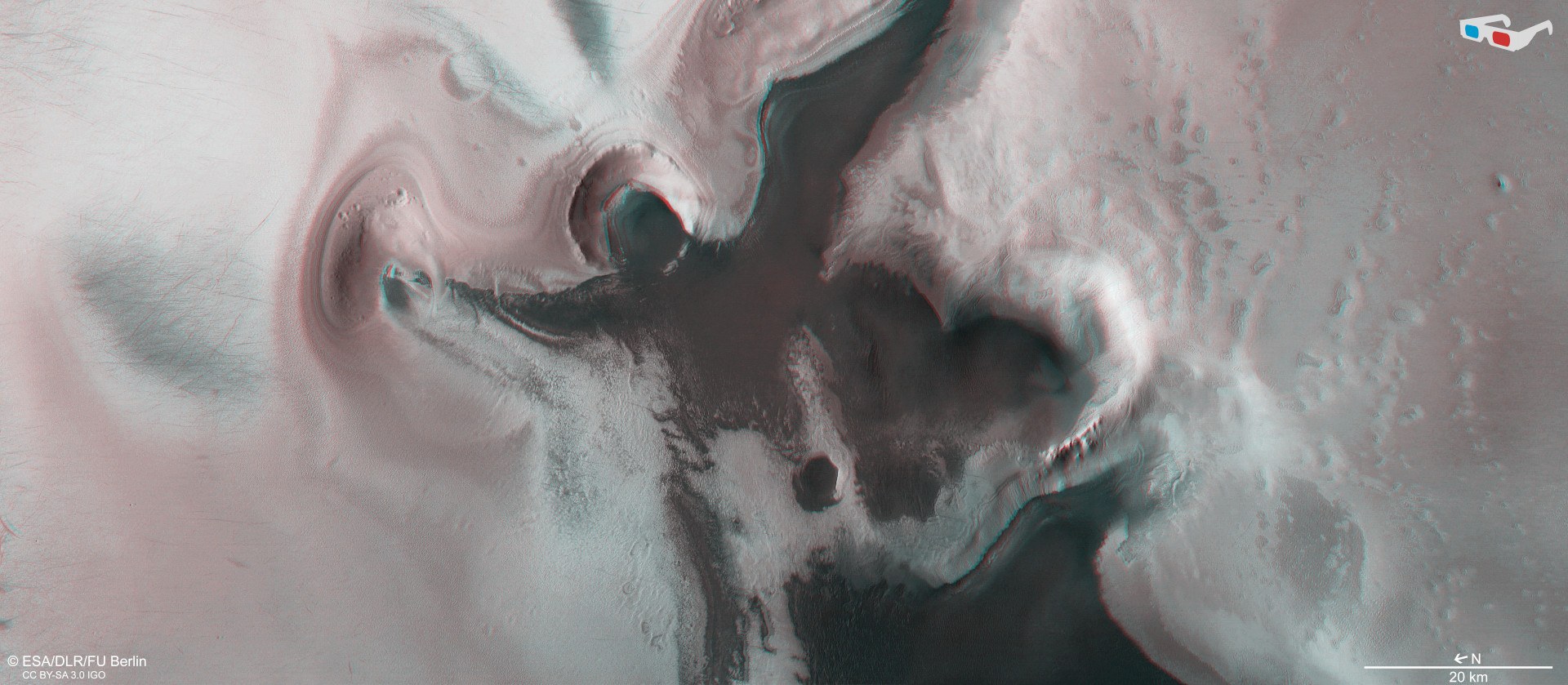3D view of an ‘angel’ on Mars with a big heart
3D view of an ‘angel’ on Mars with a big heart
Anaglyph images can be created using data acquired by the nadir channel of the High Resolution Stereo Camera (HRSC) operated by DLR on board ESA’s Mars Express spacecraft (the field of view of which is aligned perpendicular to the surface of Mars) and one of the four oblique-viewing stereo channels. When viewed with red-blue or red-green glasses, these images give a three-dimensional view of the landscape. North is to the left of the image. Here, the topography of a strikingly outlined landscape structure catches the eye, reminiscent of an angel with outstretched wings, under whose (from the camera's perspective) right wing a heart can be seen. The topography stems from accumulated deposits of dark volcanic sands, which can be easily understood in the 3D view. With a little imagination, even the crater rim of the depression that makes up the ‘head of the angel’ can be interpreted as a halo.

